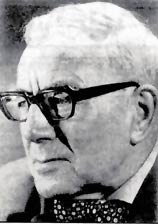I realize that the debate between the right to know and the right to privacy is one that will likely never have an answer short of anarchy or repression. This fact, however, calls all of us to constantly re-examine these dimensions of our society and try to reach a situational consensus based on principle. Is this possible? We must at least try.
What suprs me to these reflections was a story concerning further photos of detainee abuse at Abu Ghraib in Iraq (read the story at CNN). It seems that the ACLU has petitioned a court and won in a case concerning these photos and the Freedom of Information Act. While admitting that these photos may cause further distress to the American people, the ACLU lawyer claims that it is the right of the people to see such information. I suppose that she is right in the fact that people have the right to see these documents, especially if they are ever to become part of a lawsuit/legal proceeding concering these behaviors either in civilian or military court.
The only reservation that I possibly have is for the wider effects of more photos on our image abroad. This, admittedly, can hardly get much worse (especially among Muslim populations), but this raises an interesting point: how much power do such images have to crystallize resistance/violence against American interest above and beyond pre-existing conditions? Also, there are issues of interpretation on the part of these supposed inflamed Muslim populations and the percieved effect of such images.
First, the power of the image. It is true that, given the widespread media exposure that everything seems to get, these images would doubtless spread across the world in various forms with out any delay. They would reach all corners of the earth where different groups of people will see them in different ways. There can be little doubt that the people who already have doubts about the United States and its position in the Arab world will see these as further proof of the insidious nature of policy.
This brings me to my second point, one often ignored by media, government and others who make these decisions. It is assumed that people in the U.S. will see these images and draw the conclusion that these are the acts of a few aberrant individuals and not indicative of the larger U.S. policy in Iraq. It is rarer said that these images, like the nightly reports of violence from Iraq, are bringing together the "great silent majority" (to use a phrase from Richard Nixon) in opposition to U.S. involvement. These points, while contradictory, are seen as somewhat complimentary as the U.S. people are seen to be free to form their own opinions as this is our tradition.
Why, then, is the same standard never applied to the "Muslim world?" Even the term "Muslim world" speaks of a monolithic community wherein the Arabs of the Gulf States, Iraq, Iran, Turkey, Algeria, Morocco, Indonesia, Pakistan, the western provinces of China, the former Soviet Central Asian states, Europe, North America and everywhere else think with one mind and speak with one voice. It is as if these diverse people are not trusted by the media powers to make their own decisions; it is assumed that they will react violently and their hatred of the West will grow ever keener. Why is it never thought that, around the world, people might think differently. What is beyond a Muslim anywhere in the world from thinking that these pictures are of horrible crimes commited by evil people who do not reflect the opinion of Americans of all Muslims? I would venture to say that there is nothing that would prevent such an opinion.
These are the problems that always arise when people deal it generalizations and absolutes. Society is a rich tapestry of intersecting emotions, sturctures and realities. It would serve all humankind well if we were to recognize that societies are collections of individuals rather than faceless masses persuaded from above.
Do Not Worry
6 years ago

No comments:
Post a Comment